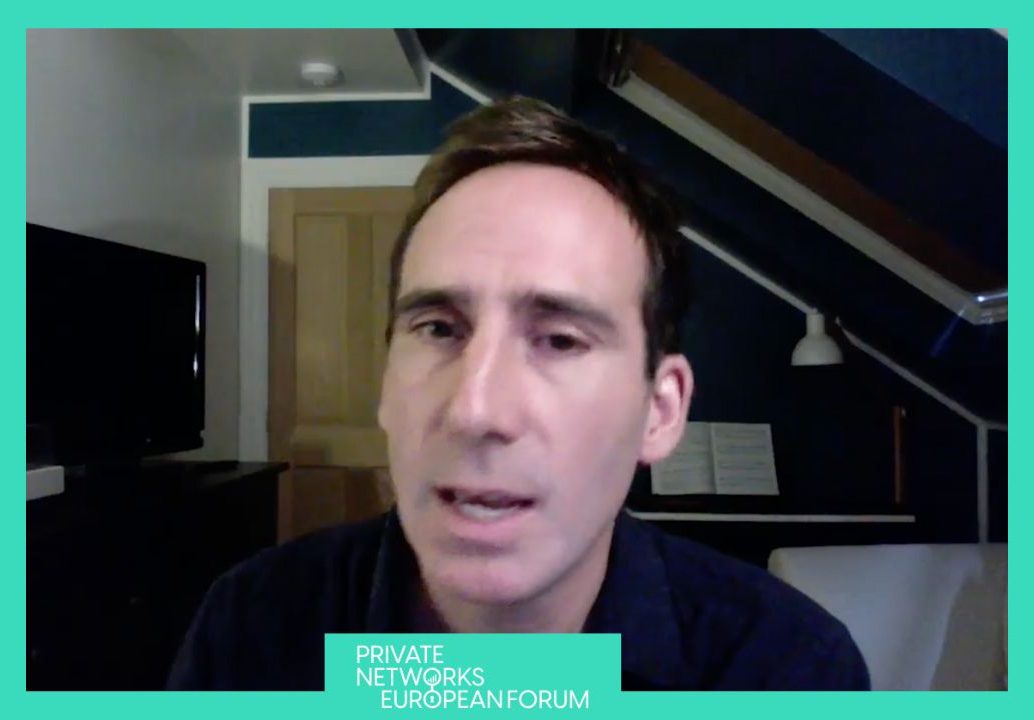Note, this is a revised version of the intro/outro statements at Private Networks European Forum earlier this month, presented then as a way to invite conversation about the state of ‘things’ in Europe, and re-presented now as a think-piece for the same. It considers how to assess progress with private networks by taking the example of Germany, as a start point, where the primary focus has been to develop 5G for manufacturing.
The forum references and open-ended format – plus the personal/conversational tone – reflect its origin, as an opening monologue for a discussion event. All sessions from Private Networks European Forum are available on-demand, here.
…
“So… I joined Enterprise IoT Insights around five years ago, as a European-based journalist for a US-based publication – because Europe was where the action was with enterprise IoT. And this was because Germany, mainly, had implemented a programme around Industrie 4.0. And it was very clear, very quickly, that the IoT story splits in two around this theme – around low-power IoT (sometimes) connected on both cellular and non-cellular LPWAN technologies, and higher-performance IoT (newly) connected on LTE networks, shrunk to fit in all kinds of enterprise venues.
“This emerging high-power wide-area edge-LTE space within enterprises was the new ‘private networks market’, beinf amped-up by 5G, and boosted by new spectrum regulation. The regulatory precedent, as mentioned, was Germany, where the government released the 3.7-3.8 GHz band for enterprises – but also the US, with CBRS spectrum at 3.55-3.7 GHz. Now, clearly, Industry 4.0 is not just about cellular. But the focus here is on LTE and 5G, mainly, and the point is about Germany and the US – and how the European picture looks.
“Because five years ago, all eyes were on Germany – and that they are now on the US. At least in terms of commercial activity. The argument can be made that Germany looks like a laggard now. It has issued hundreds (243 and counting, as of September) of 5G licences to enterprises and institutions, but most are for trials and tests. The temptation is to say, as well, that Germany, as the first mover, is reflective of the rest of Europe. Because Europe, at a glance, looks like a mess.

“This European chaos is down to spectrum regulation, which is fragmented between countries. So a multinational has to go country-by-country and regulator-by-regulator – because spectrum is the first consideration in the solution consultancy phase, as we we know, and then the radio, and then the core. Which is not the same in America. Because America is massive, and CBRS is consistent across almost all of it, except coastal regions and top-secret locales. So spectrum is easy. And it is easy in different ways in China, too – because it is government-mandated, and operator-owned.
“And someone said to me last week that the US version of Hannover Messe in Chicago last month was a total revelation. That everyone wants 5G – or LTE, at least. No tests, no proofs – straight to work. Kind of thing. That sales are flowing. And they said it is a mentality thing; that the Americans just get on with it, where Europe likes to tinker and talk, and think about things. That European industry is paranoid and conservative. But that is not right, actually. Because it is just Germany.
“Europe is not such a mess – arguably, as well. Yes, spectrum rules are different; but they can be navigated. It’s anecdotal, right – and dangerously close to stereotyping. But the UK is flying, France is flying, Spain is flying, the Nordics are flying. (Ed: There is notable activity in the UK, where vertical spectrum is more plentiful; the Nordics have backed industry with early spectrum provisions; there are healthy signs of movement in France and, latterly, Spain.) The point is spectrum is not the headache it once was, even if the ecosystem for compatible radios and devices remains a challenge.
“The point is, also, that a can-do attitude is infectious. And it is not stereotyping, either – because it is not Germany. This caricature is about manufacturing – which Germany does well. And maybe, some day, Germany will show everybody else what higher-end private 5G can do. Maybe, maybe not. Perhaps it is just a case of: you’re either doing it, or you’re not. And in the meantime, enterprises everywhere, in every discipline, are putting private cellular to work – and learning, and growing, and changing. Who knows? Maybe we will get some answers today…”
…
“Private 5G seems easier, perhaps, for big countries like the US and China – so long as the regulatory environment is right. It is harder in Europe just because the picture is fragmented. But as we’ve heard (at Private Networks Europe Forum) and as we write about every week on Enterprise IoT Insights, Europe is a busy market for private LTE and 5G. And that goes for in-country deployments and cross-continental projects, increasingly, too.
“There aren’t that many of the latter, but you see Airbus, Bosch, Schneider Electric, and others doing this now in Europe, mostly with LTE, and really starting to manage scale. The question of scale is an interesting one; we tend to be impressed when the big brands of industry – when big manufacturers, or utilities, or airports, or logistics centres – deploy private 5G, as if these are signs it has come of age. But that is wrong.
“Private 5G will come of age when companies we don’t know about with brands we’ve never heard about – which represent the wider enterprise mass-market – start to deploy this stuff. When the old IT reseller and mobile dealer channels start to push private-5G box-sales; if Vodafone and Cisco, say, ever start selling private 5G on commission via third-party channels, we will know private 5G has differentiated mass-market appeal.
“But we don’t know that yet. Because maybe most enterprises will just go with a Wi-Fi upgrade – to get them where they need to go. Maybe, probably, it will be some-and-some, depending on the sector. The point is only that there is a long way to go. And while I hinted, earlier, that the question of spectrum in Europe looks like an easier one, now – just because more and more markets have legislated for it – it does not go away.
“The question just shifts to ask about the ecosystem of radios and devices, and changes to ask whether there is enough spectrum – whether 100MHz or 400MHz is enough, how much is needed in the mid-band, how much is needed higher-up; whether 5G will ever work in unlicensed spectrum. So, we will be back here again, of course. Because we don’t have definitive answers yet. It takes events like Private Networks Forum to take stock, and plot a way ahead…”

